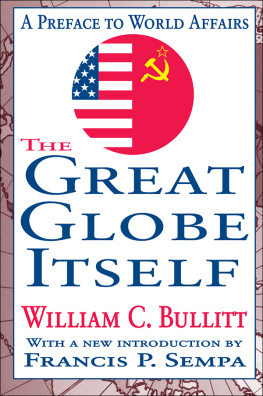
UTOPIAS OF ONE
Utopias of One

Joshua Kotin
PRINCETON UNIVERSITY PRESS
PRINCETON & OXFORD
Copyright 2018 by Princeton University Press
Published by Princeton University Press,
41 William Street, Princeton, New Jersey 08540
In the United Kingdom: Princeton University Press,
Street, Woodstock, Oxfordshire OX20 1TR
press.princeton.edu
Jacket art: Henry Francis Walling, 182588. Map of the town of Concord, Middlesex County, Mass. Library of Congress, Geography and Map Division
The Course of a Particular from OPUS POSTHUMOUS: POEMS, PLAYS, PROSE by Wallace Stevens, copyright 1989 by Holly Stevens. Copyright 1957 by Elsie Stevens and Holly Stevens, copyright renewed 1985 by Holly Stevens. Used by permission of Alfred A. Knopf, an imprint of the Knopf Doubleday Publishing Group, a division of Penguin Random House LLC. All rights reserved.
The Course of a Particular from Collected Poems by Wallace Stevens, reprinted with permission of the publishers, Faber and Faber Ltd.
An excerpt from Canto LXXXIV by Ezra Pound, from THE CANTOS OF EZRA POUND, copyright 1948 by Ezra Pound. Reprinted by permission of New Directions Publishing Corp.
An earlier version of , Osip and Nadezhda Mandelshtams Utopian Anti-Utopianism, appeared as Osip and Nadezhda Mandelshtam and Soviet Utopianism in Modernism/modernity 24.1 (January 2017), copyright 2017 The Johns Hopkins University Press.
An earlier version of , Wallace Stevenss Point of View, appeared in PMLA 130.1 (January 2015), published by the Modern Language Association of America.
An excerpt from an earlier version of , Reading Ezra Pound and J. H. Prynne in Chinese, appeared as Blood-Stained Battle-Flags: Ezra Pound, J. H. Prynne, and Classical Chinese Poetry, in News from Afar: Ezra Pound and Some Contemporary British Poetries, edited by Richard Parker (Bristol: Shearsman Books, 2015).
Permission to quote work by Anne Birrell, Li Zhimin, and J. H. Prynne granted by the authors.
All Rights Reserved
Library of Congress Cataloging-in-Publication Data
Names: Kotin, Joshua author.
Title: Utopias of one / Joshua Kotin.
Description: Princeton : Princeton University Press, 2017. | Includes bibliographical references and index.
Identifiers: LCCN 2017007977 | ISBN 9780691176710 (hardback : alk. paper)
Subjects: LCSH: Utopias in literature.
Classification: LCC PN56.U8 K68 2017 | DDC 809/.93372dc23
LC record available at https://lccn.loc.gov/2017007977
British Library Cataloging-in-Publication Data is available
This book has been composed in Miller
Printed on acid-free paper.
Printed in the United States of America
10 9 8 7 6 5 4 3 2 1
for Rachel
Thank Heaven, here is not all the world.
HENRY DAVID THOREAU , WALDEN
CONTENTS
INTRODUCTION
Utopias of One
The word utopia is now almost entirely meaningless.
Yet all utopias share at least one basic feature: failure. The words etymology makes the point: Thomas More invented the word utopia in 1516 by combining eu-topia (good place) and ou-topia (no place). Failure is inevitablewhether the aim is a social structure that harmonizes individual and collective interests or freedom without limit.
Not all utopias fail in the same way, of course. Some end in mass death. Others remain fixed to the pages of novels and manifestos. The reasons for failure also vary. Some utopias rely on violence. Others are quixotic. Most are simply unable to overcome the class interests of an elite or the inertia of everyday life.
Failure can be redeemed as social critique. Utopia, argues Jay Winter, is a fantasy about the limits of the possible, a staging of what we take for granted, and what is left unsaid about our current social conventions and political cultures.
This cursory account of utopia connects Fruitlands and the Soviet Union, William Morriss News from Nowhere (1890) and B. F. Skinners Walden Two (1948), and Jean Baudrillards Utopia deferred... (1971) and Anahid Nersessians Utopia, Limited (2015). An unrealized, unrealizable ideal; the consolations of social critiquethis is utopia.
Utopias of One departs from this account of utopia. The book follows eight writersHenry David Thoreau, W.E.B. Du Bois, Osip and Nadezhda Mandelshtam, Anna Akhmatova, Wallace Stevens, Ezra Pound, and J. H. Prynneas they respond to the failures of utopia by constructing utopias of one. These utopias do not fail. But their success comes at a cost: they cannot serve as models for readers hoping to perfect their own lives or remake their communities. Utopias of one are exclusiveand, in most cases, inimitable.
This book tracks the emergence of these utopias within and against modernitys two most ambitious attempts to harmonize individual and collective interests: liberalism and communism. My approach is comparative and transnational. The books chapters move from antebellum America through the end of Jim Crow, from Stalins Russia through the Soviet reform period known as the Thaw, and from England and America at the dawn of World War I through the end of the Cold War and the emergence of neoliberalism. Together, the chapters capture how writers from diverse contexts create lived and perfect worldsfor themselves alone.
From one perspective, utopias of one are unremarkable. In Charles Olson: A Scholars Art (1978), Robert von Hallberg criticizes American poets who attempt to change American culture by establishing common knowledge and values but then settle for the achievement of a personal order. From this perspective, utopias of one simply reaffirm my earlier account of utopia and failure: a utopia of just one person is a contradiction in termsand thus no utopia at all.
But from a different perspective, utopias of one represent a limit case of literary efficacywhat literature can and does make happen. (Efficacy: Power or capacity to produce effects, to quote the Oxford English Dictionary.) The texts I examine are not merely occasions for imagining or promoting alternatives to the status quo or for representing totalitywhat Joshua Clover calls the inner dynamic of social existence and its forms of appearance. Their efficacy is real, direct, and dramaticyet isolated and isolating, singular and specific.
This is my first overarching claim: the texts I examine create perfect worlds. My second overarching claim is related: the texts I examine create perfect worlds by refusing or failing to present models of perfect worlds. Efficacy and divisiveness go hand in hand. For the writers I discuss, the dissolution of community is the first step toward establishing an alternative to community. The book, in this way, offers an account of utopianism that does not default to an account of failure and social critique.
Despite the books complexity and breadth, it explicates a basic sequence of events. A writer responds to the failure of utopiaAmerica in the aftermath of Reconstruction, the Soviet Union in the 1930s, the world under neoliberalismby devising his or her own utopian project. The project is precarious. It risks solipsism at one extreme and mere critique at the other. Ultimately, its effects are asymmetrical and highly improbable: a perfect world that cannot be replicated or shared.
Utopias of One attempts to illuminate these asymmetrieshow texts benefit writers and neglect (and even harm) readers. Occasionally, the asymmetries (and the utopias that result) are intentional. Writers develop techniques to estrange readers: irony, obscurity, invective, clich. But in many cases, the asymmetries are unintentional. Writers do not intend to abandon the larger social project (to quote Buck-Morss again), yet discover that they are unable to reverse the divisive effects of powerful institutions: legal segregation, government censorship and surveillance, class. In such cases, writers save themselves and leave readers behind.
Next page














